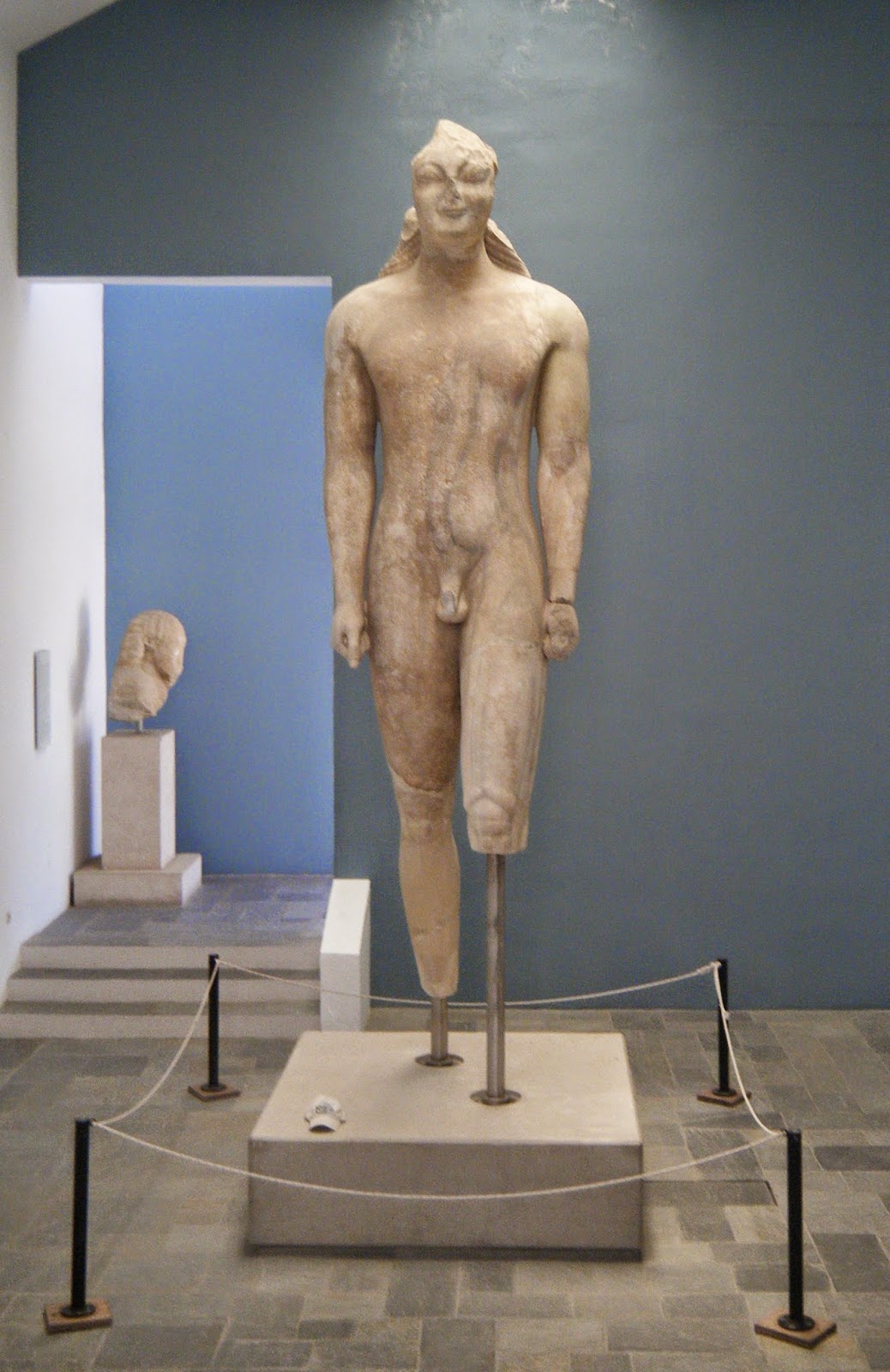 |
| Ruins of the ancient Hera ion, or Temple of Hera at Ireon |
 |
| The Via Sacra or Sacred Road |
Leading up to the column you can still see
long sections of the stone paved Sacred Road which once connected
the ancient city to the temple complex. The road itself had been
lined with an impressive array of votive shrines, inscribed stelae, and marble
statuary. The Kouros of Samos, the largest statue of its kind in Greece,
was excavated from near the Sacred Road in 1980 and now stands in the
Archaeological Museum in Vathy.
The temple campus is seated in a low fertile plain, created by silting from the river Imbrassos. It was on the bank of this river in the shade of a willow tree that, according to mythical tradition, the Greek goddess Hera was born. This was an important sacred site to the ancients, and it has become a ‘must see’ destination for thousands of the international tourists who visit the island each year.
The site of the ruins, the Island of Samos, the
willow tree, and the peacock, were all sacred to the cult of Hera. Images
of willow branches and peacocks are still used to identify depictions of Hera
on ancient coinage, and wild peacocks still populate the island. Last
week we narrowly missed being slammed into by one that was flushed from a
mountain road by our rented car. Vestiges of the tradition are still
everywhere, if you know what you are looking for, or at.
 |
| The Kuros of Samos |
Nothing
happens quickly here, but as old buildings start coming down over the next few
centuries, there is no telling what might show up. Somewhere on the
island a grand architectural fragment could surface that had been used as a
cornerstone for someone's long forgotten chicken coop; it wouldn't surprise
me
 |
| photos by Newell - 2014 |

No comments:
Post a Comment